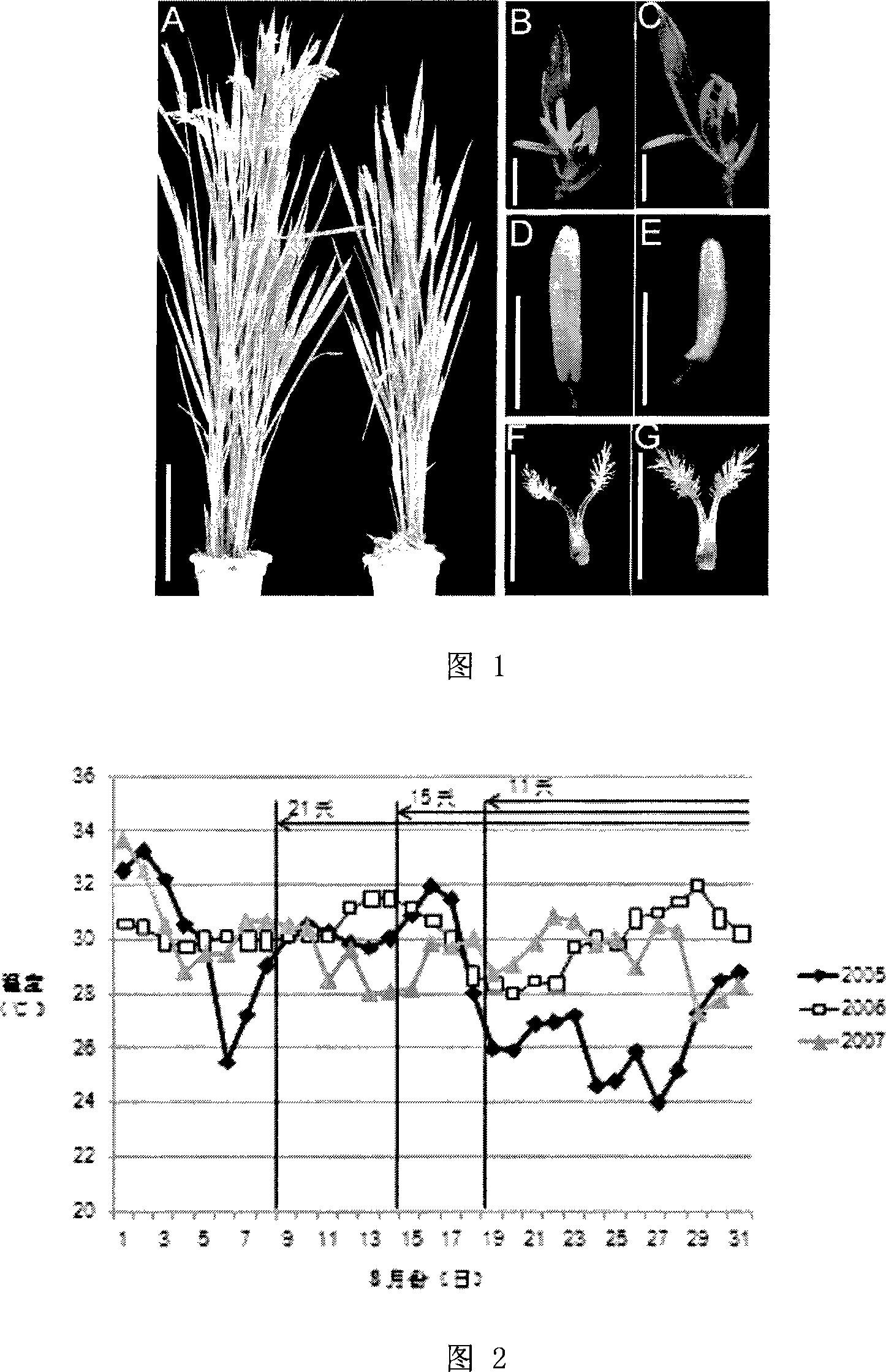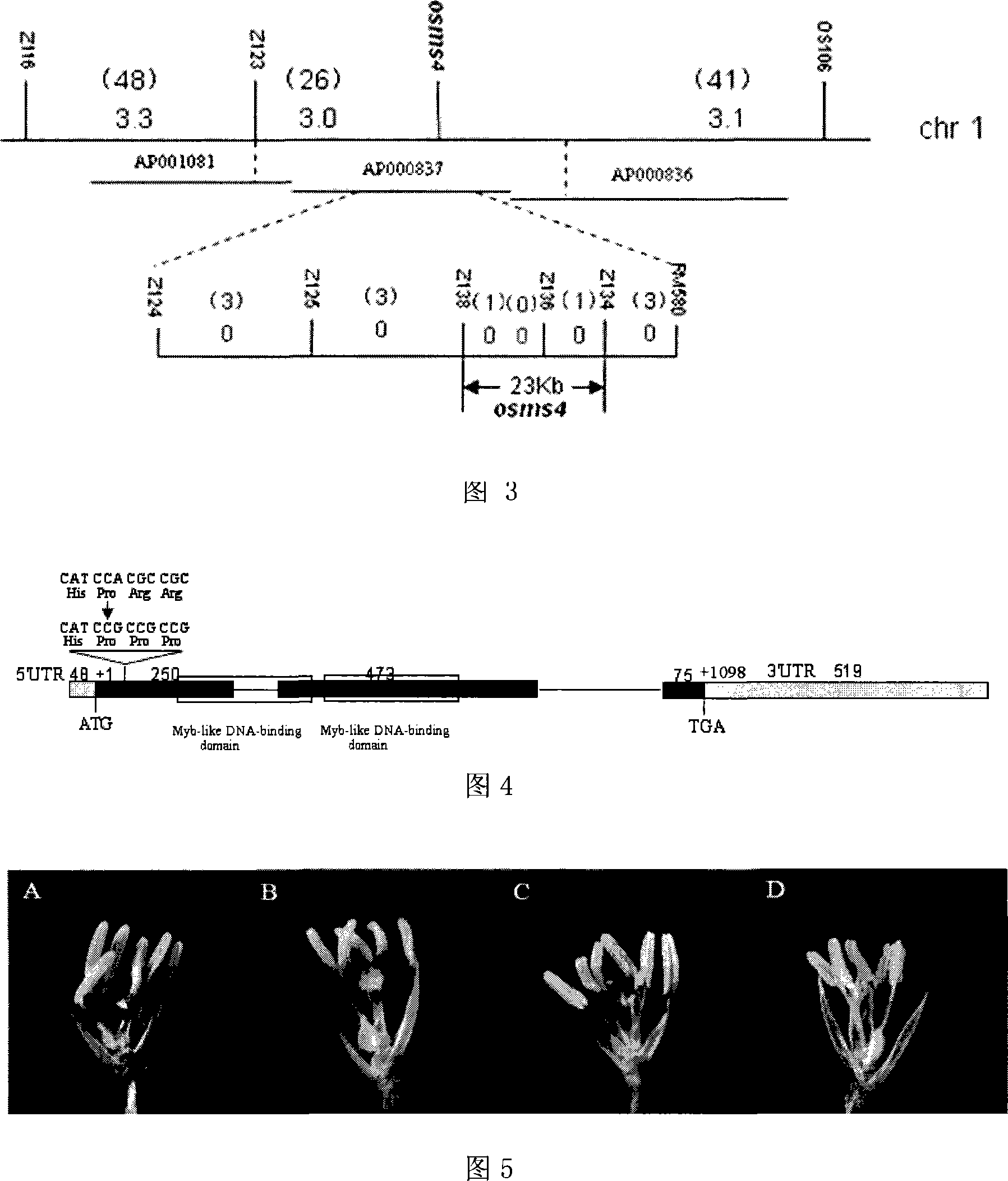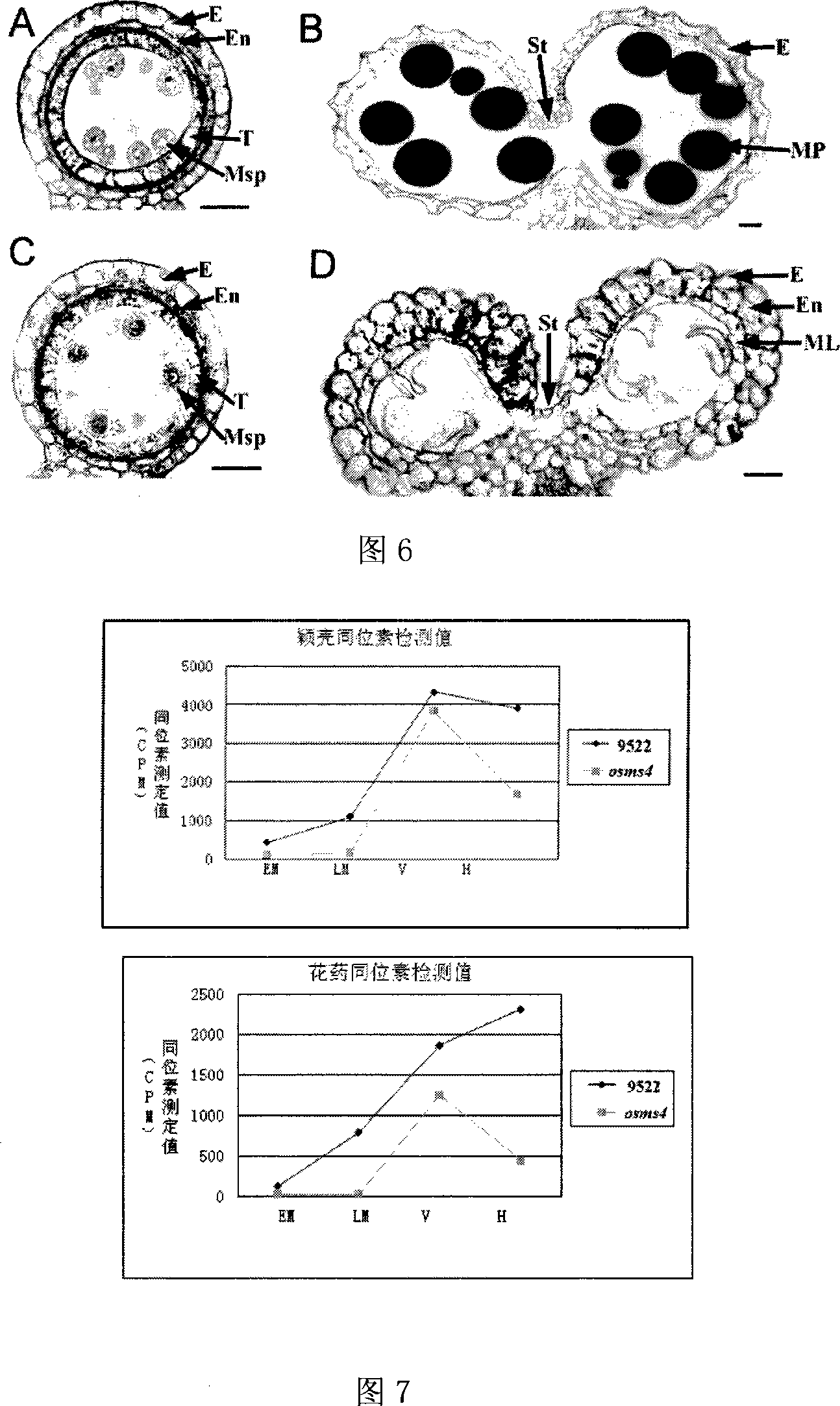Protein coded sequence for regulating and controlling temperature and light sensitive nuclear sterility
A coding sequence, nuclear sterility technology, applied in the direction of sugar derivatives, plant peptides, biochemical equipment and methods, etc.
- Summary
- Abstract
- Description
- Claims
- Application Information
AI Technical Summary
Problems solved by technology
Method used
Image
Examples
Embodiment 1
[0046] Embodiment 1: Obtaining and morphological observation of osms4 mutant plants
[0047] This mutant was used in our laboratory 60 Japonica rice 9522 seeds were induced by Coγ-rays at a dose of 280Gy. A male sterile mutant in the mutagenized F2 generation was backcrossed for three generations, and a stable genetic mutant osms4 regulated by a recessive single gene was obtained. All plant materials were planted at the experimental base of Shanghai Academy of Agricultural Sciences. The osms4 mutant was backcrossed with japonica rice 9522, all the F1 generations were fertile, and segregation occurred in the self-crossed F2 generation, of which 189 were normal plants and 55 were mutant plants, and the ratio of normal plants to mutant plants was close to 3:1 (x 2 =0.79□□× 0.05 3.84), indicating that the phenotype of the male sterile mutant was caused by a mutation of a single nuclear gene.
[0048] Morphological observation of osms4 mutant plants. As shown in Figure 1, the ...
Embodiment 2
[0049] Example 2: Research on the relationship between osms4 mutant physicality and temperature and light environment
[0050] 1. Field experiment
[0051] Through the observation of the fertility transition law of osms4 for three consecutive years from 2005 to 2007 (Shanghai Academy of Agricultural Sciences), it was found that the three-year sterile period and fertile period were basically the same:
[0052] In 2005, from August 20th to August 26th, the plants did not bear fruit, and they were sterile. From August 27th to September 5th, the pollen grains had a high fertility rate. Without bagging, the firmness rate is nearly 100%. From September 2nd to September 5th, the firmness rate of bagging reached a maximum of 60%. After September 6th, the bagging did not firm up.
[0053] In 2006, from August 20th to August 30th, the bagging was not strong. From August 31 to September 2, the ear pollen grains had a high fertility rate, and the bagging was firm. After September 3, the...
Embodiment 3
[0060] Example 3: Location and cloning of the OsMS4 gene
[0061] (1) Positioning groups. The osms4 was crossed with the indica rice line Longtefu B, the F2 generation was obtained by selfing, and the male sterile plants were selected as the positioning population.
[0062] (2) Rice DNA extraction. Using the improved CTAB method. The simple steps are as follows: Take 0.1-0.2 grams (about half a piece) of leaves and put them in a small mortar, add an appropriate amount of liquid nitrogen, grind them to powder immediately, put them into a 2ml centrifuge tube, add 700ul of 1.5xCTAB solution preheated at 100℃ in In a centrifuge tube, mix carefully and place in a 56°C water bath. Take out the centrifuge tube after 20 minutes, add an equal volume of chloroform / isoamyl alcohol, mix vigorously, centrifuge (13000rpm) for 10 minutes, take the supernatant into a new tube, add Mix 900ul of absolute ethanol and place at -20°C for more than half an hour. The precipitated DNA was centrif...
PUM
 Login to View More
Login to View More Abstract
Description
Claims
Application Information
 Login to View More
Login to View More - R&D
- Intellectual Property
- Life Sciences
- Materials
- Tech Scout
- Unparalleled Data Quality
- Higher Quality Content
- 60% Fewer Hallucinations
Browse by: Latest US Patents, China's latest patents, Technical Efficacy Thesaurus, Application Domain, Technology Topic, Popular Technical Reports.
© 2025 PatSnap. All rights reserved.Legal|Privacy policy|Modern Slavery Act Transparency Statement|Sitemap|About US| Contact US: help@patsnap.com



